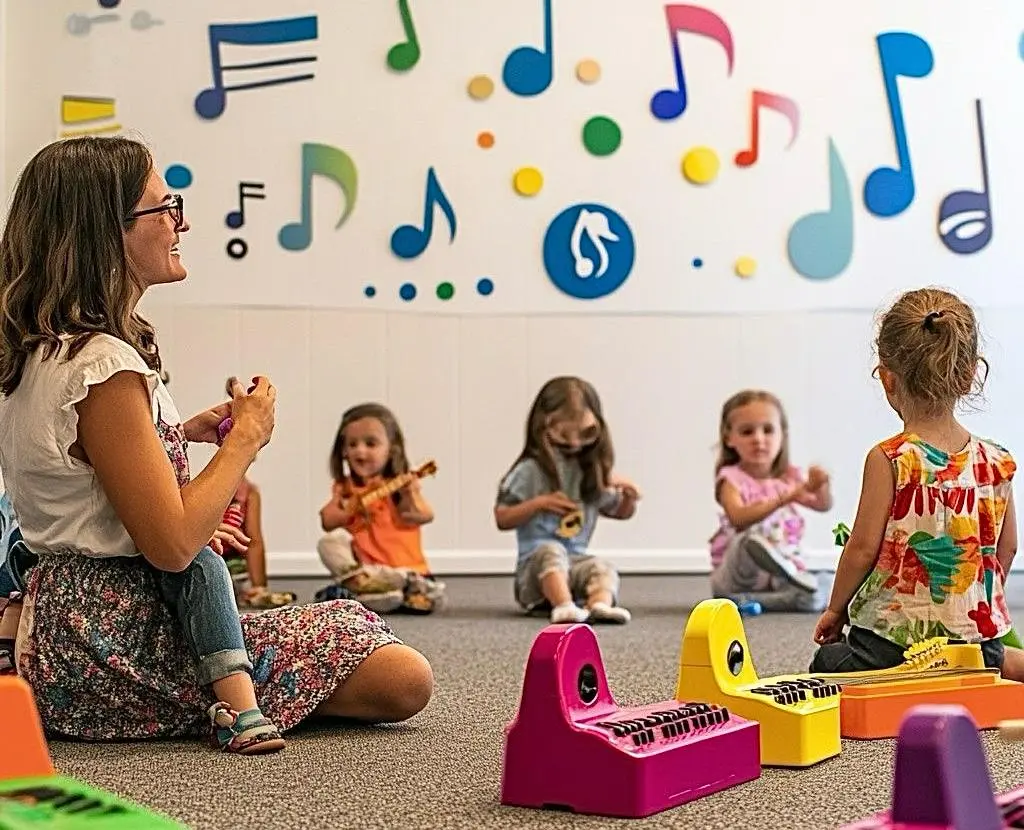Movement and Music
Greetings to the Movement and Music Educators' Learning Center
During childhood, movement and music are an integral part of creativity. Children can engage with emotions, communicate nonverbally, and develop rhythmic, gestural, and sound expressions. The importance of music and movement lies in their role in brain development, motor skill improvement, and imagination development. Children also freely create, interpret via dance and play. They can also develop their creative thinking and problem-solving abilities. These enjoyable and social activities promote cooperation and relationships. Movement and music in the curriculum will enhance all-around development, including physical, social, emotional, and cognitive aspects, while also allowing children to express their personalities in realistic and imaginative ways (Howard & Mayesky, 2022).
Theories and Perspectives on Creativity in Art
- Howard Gardner’s Multiple Intelligences Theory: he points out that musical intelligence is correlated with rhythm, pitch, and tone body kinesthetic intelligence (the ability to control body movements). Movement and music will enable various learners to address these intelligences. (Nolan and Raban, 2024).
- Vygotsky’s sociocultural theory: he places emphasis on social interaction and play in learning. The Zone of proximal development is fostered with the help of a teacher, based on movement and music.
Resources, Materials, and Digital Technologies
- Physical tools: Scarves, ribbons, soft balls, streamers, maracas, and props such as hoops.
- Digital tools: Garage Band, Taco band, Cosmic Kids Yoga, GoNoodle (movement platform), recording tools like tablets, smartphones.
- Audio resources: Soundtracks, classical music, Raffi (gentle and imaginative songs), music apps.
Learning Experiences for Different Age Groups
- 0 to 2 years
- Music and movement with scarves: lightweight scarves are waved to smooth music, and the educators facilitate slight movements of infants. Improves the ability to sense and rhythm.
- Sing and bounce: As infants jump up and down on the lap of the educators to the tunes of the nursery rhymes.
- 2 to 3 years
- Emotional dancing: play music that reflects a range of emotions, such as joy, sleepiness, or excitement. Children perform dances to show how the music affects them.
- Copy me clapping game: a clapping and stomping game of call and response rhythm, which is aimed at imitation and initiation of turn.
- 3 to 5 years
- Simon says: It aids children to learn rhythmic movement and improving their body coordination. In support of musical timing and inventiveness, it also improves listening and response skills.
- Freeze dance story: dance to some music, and when it stops, then we give a part of the story, or show a scene. Combines drama, movement, and storytelling.
- 6 to 8 years
- Choreograph a dance: Children play a song and instruments in groups and co-create simple rhythmic dance patterns by clapping, jumping, spinning, and hand gestures.
- Create own instruments: take simple materials like jars, boxes, rubber bands to make simple instruments, and then perform a jam session in a group.
Original Creative Learning Opportunities
- Emotion in Motion targets children between 2 and 3 years old by making it fun to learn about feelings through motion and music. Teachers use different songs that express moods such as getting high, resting, or joy. Children are allowed to move when they feel like the music is beating them, jumping, swaying, twirling, or slowing them down. During dancing, the educators are annotating emotions and behaviours to foster early language development and understanding of emotions. Such activity fosters creativity and makes children associate feelings with body movement and sound.
- For older children aged 6 to 8, Jam makers combine creativity and practical exploration. Children create their own musical instruments out of recyclable materials such as jars, boxes, and rubber bands. They create brief rhythmic performances in small groups after their instruments are ready. They can choose a name for their band, try out different sounds, and even conduct a little jam session. In addition to making music enjoyable and personal, this exercise promotes collaboration, creativity, and problem-solving.
Critical thinking
I observe that involving children in music and movement automatically fosters critical thinking. They pay attention to the sounds, determining when to stop, how to move, and how the music affects them. I see children making decisions, experimenting with different forms of self-expression, and changing their behaviour to fit in with the group activities or rhythms. Using sound apps or recording performances are two more ways that I use digital tools to improve my creativity. This kind of creative embrace fosters communication, problem-solving, emotional intelligence, and physical development. In the end, my creative and light hearted approach produces a vibrant learning environment where creativity is embodied, danced, and celebrated across the curriculum rather than being limited to art corners.

https://pin.it/5r2ONE6lD
Original Creative Learning Opportunities for Children


